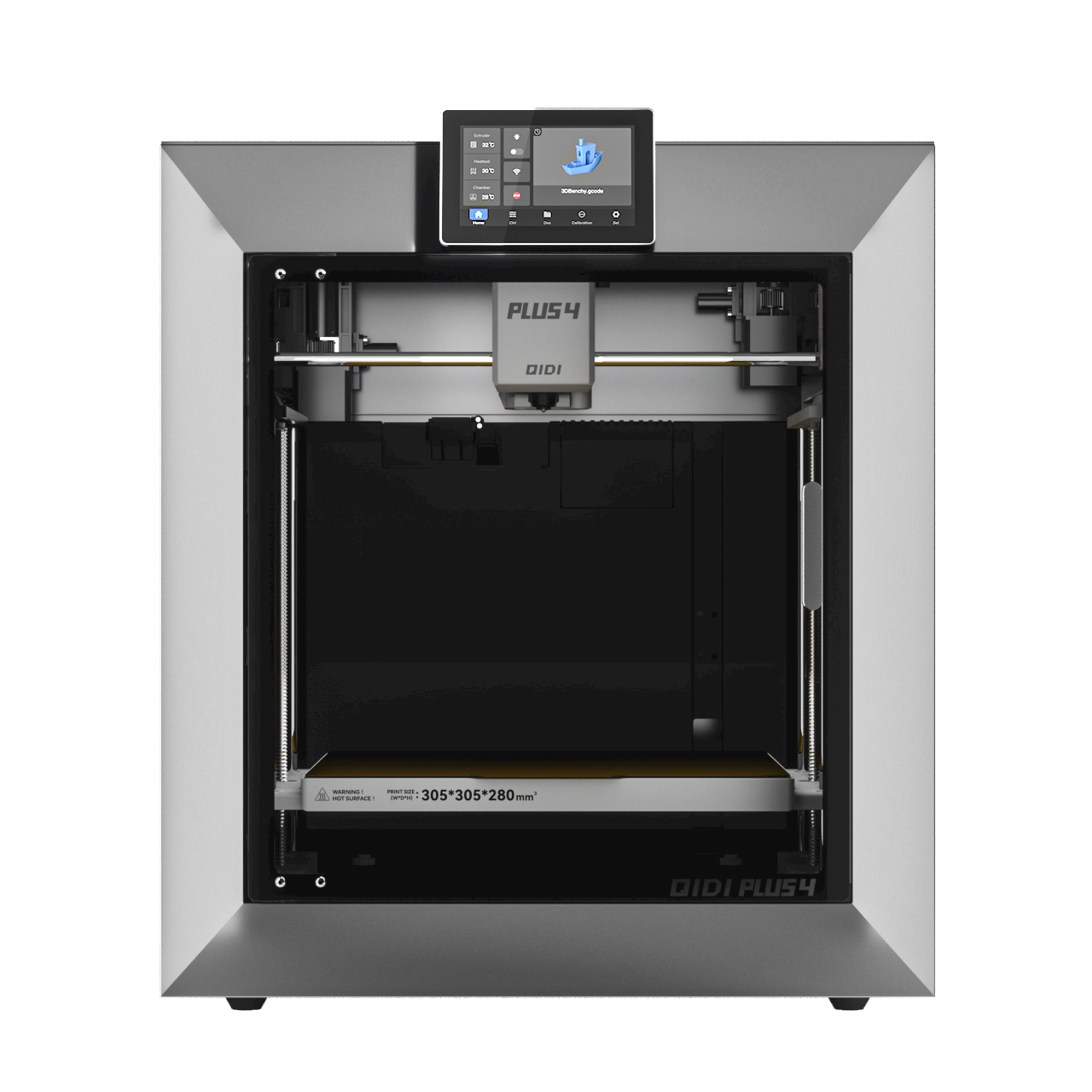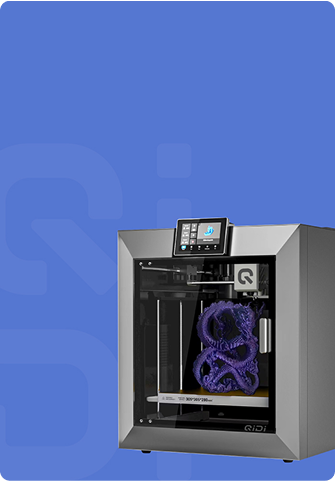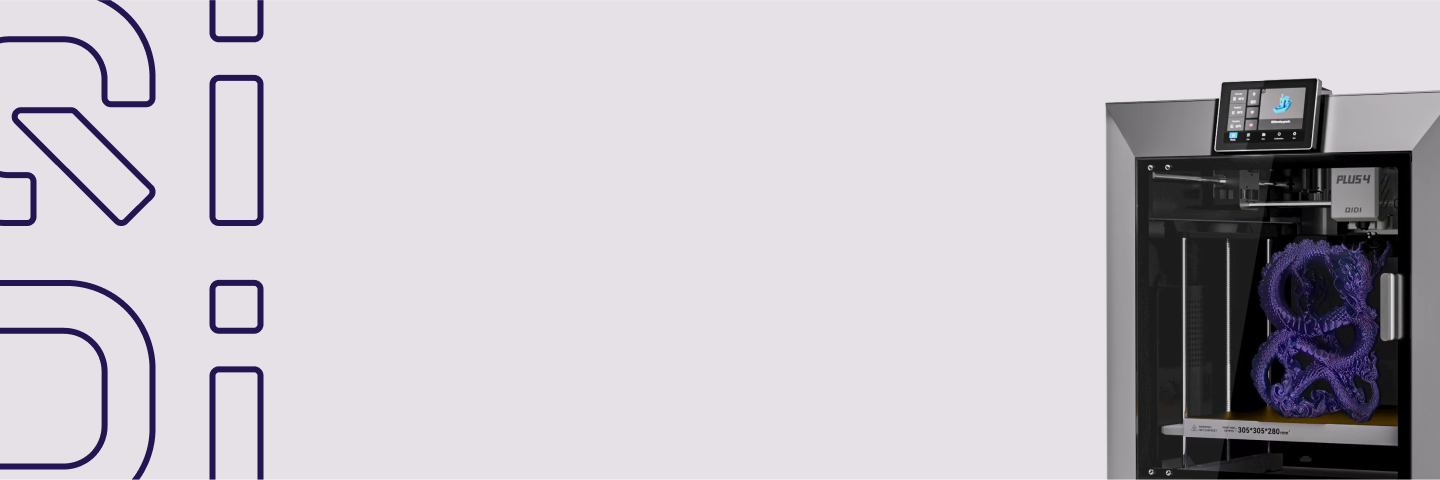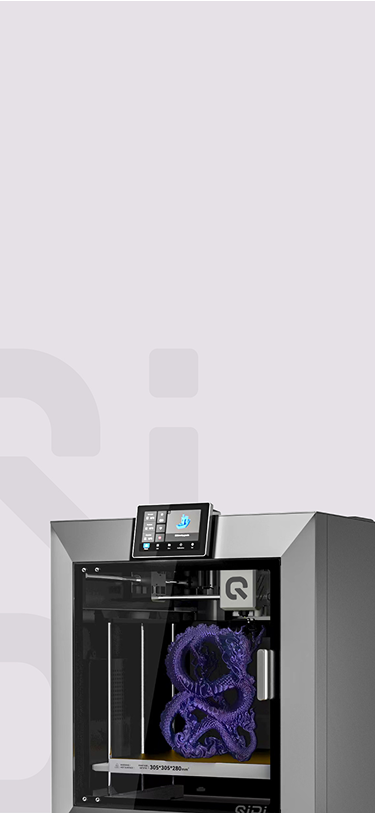A Technical Guide of QIDI 3D Printer Filaments
Because material selection is what fundamentally determines success with any 3D printing project, the filament itself dictates the strength, heat resistance, surface finish, and overall performance of the final object. QIDI 3D printer filaments are engineered to provide a precise material solution for every technical requirement, from basic prototyping to industrial-grade functional parts. Each filament is manufactured to exacting standards for consistent diameter and performance, ensuring reliability from spool to finished print. This overview details the properties of our materials to help you select the correct filament for your specific application.
Foundational Filaments for General-Purpose Printing
From prototyping to production, our foundational materials provide an optimal balance of printability and performance.
PLA stands apart from other thermoplastics due to its ease of use and low warping factor, as well as excellent bridging characteristics, making it capable of producing objects featuring fine details. It is a very good material for visual models, as well as for design prototypes. Our QIDI PLA Matte filament improves upon standard PLA by providing a non-reflective, frosted texture that effectively conceals layer lines, giving a sophisticated finish right off the print bed.
PETG, or Polyethylene Terephthalate Glycol, represents a significant jump up in mechanical strength for those applications requiring much more durability. The combination of good impact and chemical resistance, added to the low-shrinkage printing characteristics of PLA, makes it a reliable choice for functional parts, mechanical brackets, and protective casings.
Engineering Filaments for Demanding Environments
When parts need to be subjected to mechanical stress and/or higher temperatures, engineering-grade filaments must be used.
ABS, or Acrylonitrile Butadiene Styrene, is a tough polymer featuring high impact strength and high heat deflection temperature, making it perfect for parts such as electronic enclosures. For outdoor usage, ASA, or Acrylonitrile Styrene Acrylate, provides similar mechanical properties to ABS, with the critical addition of far superior UV resistance against degradation caused by sun exposure. These materials print successfully under the stable thermal environment an enclosed printer can offer.
QIDI ABS-GF25 is an advanced composite filament for more extreme industrial applications, with 25% glass fiber reinforcement. The addition greatly enhances the material's stiffness, dimensional stability, and heat resistance, making it suitable for the creation of robust jigs and fixtures, as well as end-use automotive parts.
High-Performance Composites for Maximum Strength
Composite filaments represent the pinnacle of performance in FDM printing. These materials take a robust base polymer and add in chopped carbon or glass fibers to create parts that boast very impressive stiffness and strength. To print these very abrasive filaments, a hardened steel nozzle is required to prevent rapid wear.
Our QIDI PA12-CF is an industrial-grade material together with reinforcement by carbon fibers. This results in very strong and stiff parts with good high-temperature stability, making this material a top choice for producing manufacturing aids, robotics, and lightweight structural components. For those users who require high stiffness but want much easier printing, QIDI PETG-CF combines the ease of use of PETG with carbon fiber rigidity, ideal for functional parts that must support loads without bending.
Specialized Filaments for Unique Applications
This range also contains specific needs materials like TPU, which is short for Thermoplastic Polyurethane. This flexible and rubber-like filament is used for making parts that may bend, stretch, or absorb impacts while acting as seals, gaskets, or vibration dampeners. Matching the technical specifications of a filament to those required by your project will ensure functionally sound and reliable results.
3 FAQs about QIDI Filaments
Q1: Which QIDI filament is best for a beginner?
We recommend starting with QIDI PLA Matte or standard PLA. These are very forgiving materials, print with minimal warping, and offer great-looking visuals. Most importantly, they will provide an excellent way to learn the basics of 3D printing before moving on to engineering-grade materials.
Q2: Do I need a special nozzle for carbon fiber or glass fiber filaments?
Yes. Abrasive composites such as PA12-CF, PETG-CF, and ABS-GF25 require a hardened steel nozzle to print them reliably. A standard brass nozzle will wear out quite fast, which might lead to print failures.
Q3: What is the main difference between PETG-CF and PA12-CF?
Both are high-stiffness materials, but they serve different performance levels. PETG-CF is for strong, rigid parts with moderate heat resistance. PA12-CF is an industrial-grade material with superior strength, higher temperature resistance, and better chemical resistance for end-use parts in demanding engineering environments.
3D printer buying guide
Find the perfect 3D printer for your projects.
Start your creative adventure today!
FAQs
Find answers to your most pressing questions about our 3D printing machines and services.
An FDM 3D printer, also known as Fused Deposition Modeling printers, is a printer that creates objects through layer-by-layer deposition of molten plastic filament. The plastic filament is heated until it becomes molten and extruded through a nozzle to form the shape of interest. One reason FDM printers are popular is that they are inexpensive and very easy to use, so they are widely used by both beginners and professional users.
FDM 3D printers have several advantages. The first one is that they are usually more cost-effective than other types of 3D printing technologies. This economy makes them accessible to a wide market, such as hobbyists, educators, and professionals. Second, FDM printers are user-friendly and accommodate a wide range of materials, from tough to engineering-grade thermoplastics, such as ABS and PLA. These printers are versatile, which enables one to use them in a wide range of applications, from prototyping to designing functional parts. The parts produced are strong, and they can withstand mechanical use. Running costs are also low, as it does not require any type of hazardous chemicals, making it safe and easy to run.
The FDM 3D printing process involves designing a 3D model using CAD software. After your design is ready, slicing software is used to convert the model into various layers. The printer then heats the plastic filament and extrudes it through a nozzle, laying down each layer according to the sliced model. As the layer is laid down, it cools and solidifies, building up the final object. This layer-by-layer mechanism provides control over the final object's shape and structure.
SLA and FDM are two different 3D printing technologies. The main difference is the material and the process. FDM printers use thermoplastic filaments, which are melted and extruded to lay down layers. SLA printers use liquid resin that is cured by a laser to cure each layer. SLA is usually at a better resolution, and the surfaces are smoother, so it's very fit for the designs with much detail and very intricate. FDM is more suitable for functional prototypes and bigger parts because it's stronger and cheaper. Generally, FDM is also cheaper compared to SLA printers and their materials.
Print resolution, layer height, extruder and platform temperature, print speed, filament quality, nozzle size, and proper slicer settings all impact the final print quality. Dual extrusion, an enclosed build chamber, and auto-calibration features also help improve consistency, precision, and reliability.


 Q2
Q2
 QIDI Box
QIDI Box
 Plus 4
Plus 4
 Q1 Pro
Q1 Pro
 X-Max 3
X-Max 3




